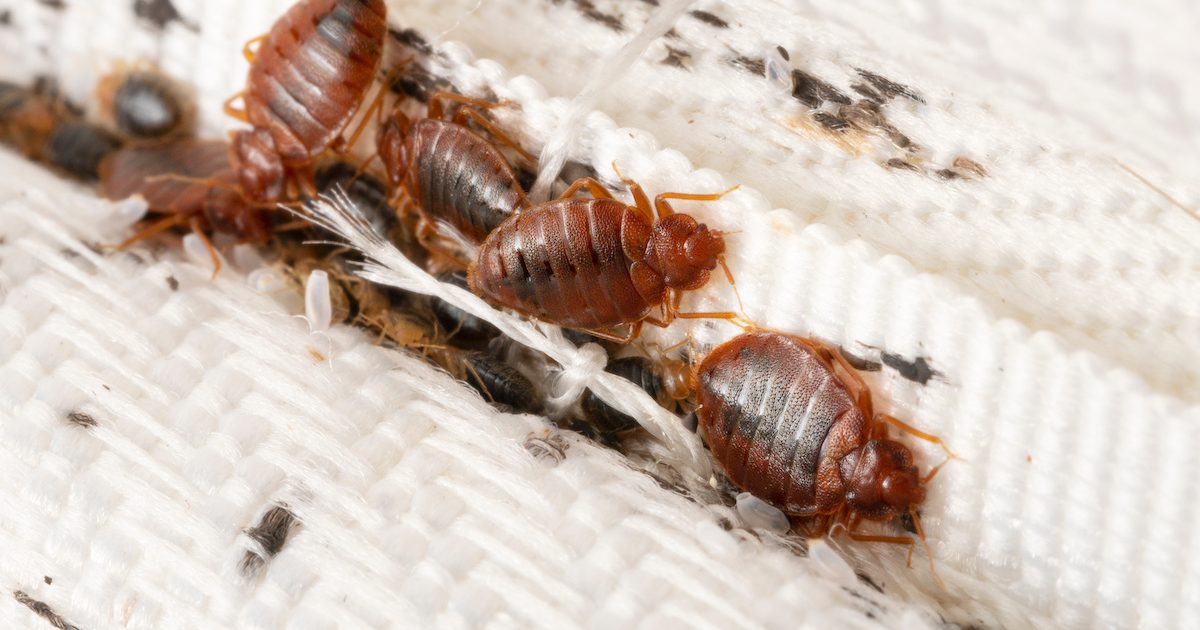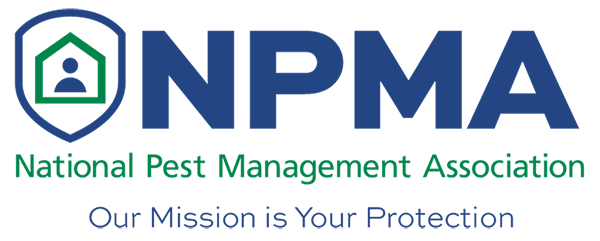
Seasoned travelers know that you have to always be on the lookout for bed bugs whenever you are sleeping away from home. Unfortunately, bed bugs are common in hotels, dorms, and homes all over the world, so avoiding them can be difficult.
If you’re going on vacation, moving your college student onto campus, or renting an apartment this summer, knowing how to check it for bedbugs ahead of time can help save you a huge headache later.
Keep reading to learn more about these pesky little insects and how to avoid them wherever you stay.
What Are Bed Bugs?
Bed bugs are small parasitic insects that feed on the blood of humans and other mammals. They’re about the size of an apple seed and have flat, oval-shaped bodies. They are typically brown in color but look reddish-brown once they are engorged with blood.
Bed bugs prefer to feed on people while they sleep. This is why they are most often found in sleeping quarters such as bedrooms, hotels, and cruise ship cabins.
However they can also be found all throughout homes, offices and other settings. They prefer warm, dark, undisturbed places and can hide in various types of furniture. This includes hiding inside wall cracks, underneath wallpaper, even inside electrical outlets.
Female bed bugs typically lay 5-7 eggs per week, which can add up to a whopping 250 eggs in their lifetime. They can live for months without feeding, which makes infestations hard to treat.
How Are Bed Bugs Spread?
Bed bugs can’t fly or jump, but they can move quickly and hide easily in tiny crevices. This allows them to remain undetected as they hitch a ride on our clothing, furniture or other belongings. Once they reach their new destination, they set up camp, start laying eggs and quickly grow into a huge infestation.
Some common ways bed bugs are spread from place to place include:
- Attaching to clothing at hotels
- Crawling from one suitcase to another in airports or on airplanes
- Hiding in second-hand furniture
- Spreading from one basket of clothes to another at the laundromat
- Clinging to clothes and linens from a yard sale
As you can see, it’s easy to pick up bed bugs and bring them into your home without ever realizing it, but how do you know if it has happened to you?
Watch Out for These Signs
Bed bugs are tiny and skilled at hiding so it may be tough to spot the bugs themselves. Luckily there are other signs that may indicate that you have a bed bug infestation.
- Unexplained itchy bites on your skin that don’t seem to go away. They often appear in small clusters and form a zigzag pattern
- Rust-colored or black stains on your mattress, pillow or other bedding
- Tiny yellow shells (exoskeletons) or eggs in your mattress or around the room
- A musty smelling odor, which is secreted by the bugs scent glands
Do They Carry Diseases or Parasites?
Bed bugs don’t carry any diseases or parasites, so you won’t get sick if you’re bitten. However, the bites are usually very itchy and may cause painful swelling, especially if you have sensitive skin. Most people can treat the bites themselves with over-the-counter creams and ointments. However, occasionally the bites can become infected or trigger an allergic reaction.
The real problem with bed bugs is that they’re very difficult to get rid of since they can reproduce easily. They can also go long periods or time without eating and travel from place to place undetected. It can be hard to eliminate all of the bed bugs in your home completely so they simply repopulate.
Tips to Avoid Bringing Home Bed Bugs
Since bed bugs can be found in so many different places, it can be hard to avoid bringing them home. That said, there are a few things that you can do to help minimize the risk.
- When you travel, research the place that you’ll be staying. Word travels fast when there are recurring bed bug problems.
- Keep your clothing off of the floor in public places. This includes hotel rooms, store dressing rooms and shared laundry areas.
- Store clothing in vacuum sealed bags when traveling.
- When using shared laundry facilities, transport your clothing in plastic bags and wait to fold clothes until you are back home.
- Carefully inspect all second hand furniture, clothing and linens before bringing them into your home.
- Use mattress covers on your mattress and bed springs, especially in you sleep in shared areas like college dorms or military barracks. Look for a cover that fully encases the mattress and zips shut.
- Immediately run all clothing through a hot tumble dryer upon returning from a trip, even if it wasn’t worn. If the item can’t be put in the dryer, set it out in the sun or use a hand steamer on it. Washing alone usually isn’t enough to kill a bed bug, it requires exposure to high heat or extreme cold.
How To Check For Bed Bugs When Traveling
Get in the habit of checking for bed bugs anytime you sleep away from home. Remember, bed bugs are not a reflection of cleanliness. They can be present even in expensive hotels or luxury homes.
To check for bed bugs:
- Look for signs of bed bugs on the bed frame and other furniture in the room. Look for black, red, or brown droppings or rust-colored stains caused by bed bug blood. These can be found near the corners of the bed, on the bed frame, or behind the headboard.
- Examine the mattress, pillows and sheets. Look for small dark spots or reddish stains on the bedding or the presence of a sweet, musty odor.
- Examine the edges of the mattress for small tears in the fabric, which may indicate that bed bugs have been hiding there.
- Examine the rest of the room, including the walls, floor, nightstand and curtains for small black stains or spots indicating bed bug droppings and fecal matter. You can use a flashlight to search more thoroughly for dark stains.
- Inspect the room’s electrical outlets and other dark crevices for signs of bed bugs.
What To Do If You Find Bed Bugs
Even if you take all the precautions when traveling, you could still find yourself with a bed bug infestation at home. If you find signs of bed bugs in your home it’s important to work quickly to try to contain the problem.
- Immediately launder all linens, bedding, pillows, curtains, and clothing in hot water. Tumble dry everything on high heat as well if it can withstand it. (Don’t forget about childrens stuffed animals, pet bedding and throw pillows!)
- If an item can’t be washed, seal it in a garbage bag and store it at extreme temperatures.
- Use a stiff brush to scrub all the seams of your mattress and then vacuum it carefully. Follow up with a steam cleaning if possible.
- Thoroughly vacuum floors and furniture. Dispose of the vacuum contents immediately in a sealed bag.
- Remove clutter from around your bed where bed bugs like to hide.
- If your mattress is infested it may be necessary to throw it out and buy a new one. Be sure that all bugs are removed before bringing a new mattress into your home or it it could become infested too.
- You can try bed bug sprays from your local hardware store but it’s unlikely to be effective since bed bugs have become immune to most pesticides.
Call In The Professionals
You can drive yourself crazy trying to launder every item in your home, but unfortunately, the only sure-fire way to get rid of a bed bug infestation is to call a professional exterminator. They use non-chemical treatments such as high heat or very cold liquid nitrogen to rid your home of bed bugs safely and permanently.
If you suspect you could have bed bugs in your home don’t waste time trying to hunt them down yourself- call a professional. Experts are trained to spot the signs of bed bug infestations and get rid of them fast.






